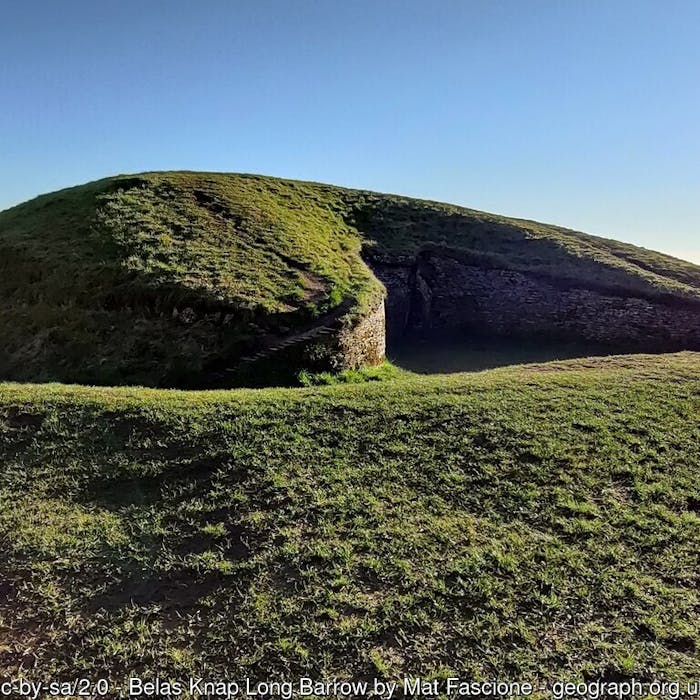
Belas Knap - a burial site as old as the pyramids
Above the Cotswold town of Winchcombe, on the Cotswold Way footpath, is the ancient long barrow of Belas Knap. And you can actually go inside it!
Anyone who has used an Ordnance Survey map is familiar with the symbol for "long barrow". It sounds exciting, redolent of buried Celtic treasure or King Arthur asleep in the hill surrounded by his knights, but - once at the spot - there is usually little to see.
However, Belas Knap, in Gloucestershire, is the real deal. It has been excavated and preserved and presents a rather awe-inspiring sight.
Belas Knap is a particularly fine example of a Neolithic long barrow, probably constructed around 3000 BC and was used for successive burials over a period of years.
One of its finest points is its impressive entrance. This is a false entrance. The burial chambers are entered from the sides of the barrow – when closed and covered by earth they would have been invisible from the outside.
It is not known why there is a fake entrance to the tombs. Possibly to deter grave robbers or as a door to be used by the spirits of the dead.
Despite its peaceful and rural location, Belas Knap has attracted attention for thousands of years. Evidence of Roman pottery shows that the Romans explored the burial chamber. It would already have been around 3000 years old at that time. The Romano-British are closer in time to us than to the builders of Belas Knap.
The barrow was excavated again in the 1860s, 1930s and 1960s. Conflicting sources suggest the remains of 31-38 people have been discovered inside.
Belas Knap is free and open all year during daylight hours. It can be accessed on foot from the Cotswold Way or a nearby car park.
Further reading
Image by Mat Fascione
Links to external websites are not maintained by Bite Sized Britain. They are provided to give users access to additional information. Bite Sized Britain is not responsible for the content of these external websites.
